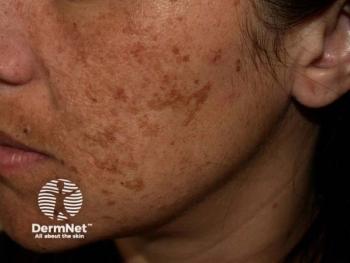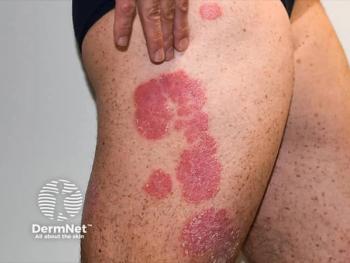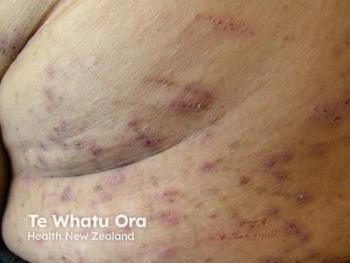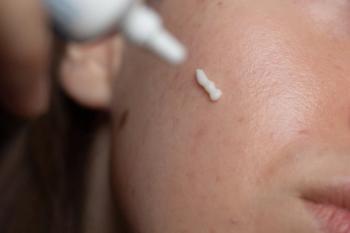
Q&A Part 2: Reviewing the Significance of Lebrikizumab for Patients With Skin of Color, With Anabela Cardoso, MD
Anabela Cardoso, MD, reflects on specific data from the phase 3b ADmirable trial evaluating the safety and efficacy of lebrikizumab in patients with moderate to severe AD and pigmented skin.
At the
In a recent interview with Dermatology Times, Anabela Cardoso, MD, senior vice president of immunology medical affairs at Eli Lilly, discussed clinical decision-making around lebrikizumab’s mechanism and dosing flexibility, patient-centered considerations such as safety, convenience, and injection experience, the value of data sharing at focused meetings such RAD, and Lilly’s ongoing dermatology pipeline.
Q: Regarding the high percentage of patients who achieved improvements in itch, pigmentation, and quality of life, how do you see lebrikizumab fitting into a clinician's treatment options?
A: That’s a very important part, because when a clinician thinks about the [patient with] moderate to severe [disease], it means it's a patient who already had topical steroids or other topical therapies, and it's considered now still active and needs to move to another option.
There are several options, of course, and that's important—that there are different options for patients. For lebrikizumab, not just with this data, but the totality of the data, the fact that it targets IL-13, a very central cytokine of the disease, and proven not just mechanistically but in the clinical trials to impact the skin severity and also itch, it's a major component of a choice.
I think when a physician sees a patient, they need to think about that: “What do I want to treat and target?” And so, acting on these 2 components of the disease is important.
The bulk of data that we now have with lebrikizumab supports using it as monotherapy, which is very convenient for patients if they don't need to have the burden of the steroids. It supports the use in these different ranges of patients, which range from naïve to biologics, different skin tones, and patients who were already exposed to biologics.
Physicians can be reassured that for the patient in front of them, there’s a piece of data from the lebrikizumab clinical program that represents that patient.
The other most important choice when it comes to treating patients is the fact that after the first 16 weeks with every 2-week administration, a vast majority of patients can move into monthly dosing, which happened in this trial as well. When they move to monthly dosing, the vast majority maintain or continue to have improvement.
There's the convenience of the administration, and the convenience of going monthly to maintain the efficacy, and then that efficacy has been proven already in the 3-year data.
These data build on the fact that lebrikizumab can be an important option for patients who want to go into maintenance once a month after being cleared, and for a diverse type of population, including patients with different skin tones. I think that’s good news for physicians and patients—that this is another option for first-line therapy.
Q: You mentioned that 73% of patients were able to move to once-a-month dosing by week 16. How does that data point help clinicians understand maintenance schedules?
A: I personally think that for patients, a lot of things matter. And for physicians, of course, the efficacy matters, the safety matters, but it also comes down to how the medicines adapt to patients who are active.
Atopic dermatitis affects women, men, students, people who need to go to school, people who need to go to work, or have kids to take care of—and there's already a burden of applying creams.
I believe that even if all things were equal, it’s important to discuss with the patients what they can expect from a certain medicine, and tell patients they can expect a more intensive regimen in the first 4 months, but then it can go to once a month. Think about it once a month, and hopefully they don’t think about it more during that period.
The safety profile has been very well characterized, so there are no boxed warnings or other big concerns. Also consider that it has already shown 3 years of data.
I think those are elements that matter for someone to start to predict, “What’s going to be my life once I’m on a biologic?”
The other factor is the device and the experience and the injection site pain, or existence of those. Lebrikizumab has shown very nice data in terms of providing a good experience and low injection site reactions. And I think those things matter, if I put myself in the shoes of a patient.
At Lilly, we try to, more now than in the past, to focus not just on the medicine, but also on the experience of the patient.
Q: In your opinion, what is the value of a disease-specific meeting such as RAD?
A: I have attended RAD since the first time it was organized. I remember when it was established, the organizers wondered, “How many people will come? How successful will this be?”—because they decided to focus on a disease that, at that time, was not as widely spoken about as, for example, psoriasis.
I value this type of meeting because it has the top experts, and you also get an audience that is really interested in the disease. They go to the meeting because they treat atopic dermatitis patients. They want to know more. They get engaged in the novelties. And they want to establish this network of experts that can talk to each other and learn from that.
We at Lilly see it as a great place to bring novel data like this, because most of the audience will attend all the sessions and will learn from the sessions, because they are interested in the topic.
The EADV is great in a different way—you learn more general dermatology—but you also may miss an important session on atopic dermatitis because you want to go to another important session on psoriasis.
RAD provides cutting-edge news. I think there’s a future for these meetings, and as long as they exist, Lilly is going to continue to partner with them.
Q: What closing remarks would you share with clinicians?
A: Today and in the future, more than ever, Lilly continues to be invested in bringing pipeline updates for dermatology.
Our pipeline exists, and we continue to evolve it—with, of course, lebrikizumab—but with our established medicines on psoriasis and alopecia areata. Our innovation continues to focus on biologics, but also on oral small molecules.
There’s a convenience aspect of small molecules that we want to explore—maybe even combination therapies for people who are more severe.
So, [there is] more to come from us in these areas, including atopic dermatitis.
References
- Alexis A, Moiin A, Waibel J, et al. Efficacy and safety of lebrikizumab in adult and adolescent patients with skin of color and moderate-to-severe atopic dermatitis: final 24-week results from the phase 3b, open-label ADmirable study. Presented at: 2025 Revolutionizing Atopic Dermatitis (RAD) Conference; June 6-7, 2025; Nashville, TN.
- Lilly's Ebglyss (lebrikizumab-lbkz) single monthly maintenance injection achieved completely clear skin at 3 years in half of patients with moderate-to-severe atopic dermatitis. News release. Eli Lilly. March 7, 2025. Accessed July 1, 2025.
https://investor.lilly.com/news-releases/news-release-details/lillys-ebglyssr-lebrikizumab-lbkz-single-monthly-maintenance
Newsletter
Like what you’re reading? Subscribe to Dermatology Times for weekly updates on therapies, innovations, and real-world practice tips.


















